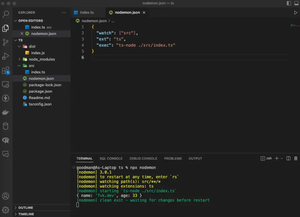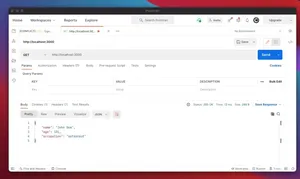This concise, practical article will walk you through some different approaches to running multiple npm scripts in parallel.
Table of Contents
Using npm-run-all
Solution description: npm-run-all is a CLI tool to run multiple npm-scripts in parallel or sequential. It is a simple and efficient solution to execute multiple scripts simultaneously without needing to handle the complexity of the underlying process management.
- Install
npm-run-allby runningnpm install --save-dev npm-run-all. - Add a new script in your
package.jsonthat usesnpm-run-allto run your target scripts in parallel using therun-pcommand. - Execute your new script using
npm run.
{
"scripts": {
"script1": "echo 'Running script1'",
"script2": "echo 'Running script2'",
"parallel": "npm-run-all --parallel script1 script2"
}
}
Pros: Simplifies running tasks in parallel; has additional features like sequential execution; reduces the need to understand complex shell syntax; cross-platform.
Cons: Requires an additional package; may not be as performant as native shell scripting in certain scenarios.
Using Concurrently
Solution description: concurrently is an npm package that allows you to run multiple commands concurrently. It is a powerful tool that can also manage prefixing output and controlling colors, making it easier to distinguish between script outputs.
- Install
concurrentlyby runningnpm install --save-dev concurrently. - Create separate scripts for each task in your
package.jsonand a collective script that usesconcurrentlyto run them at the same time. - Run the collective script using
npm run.
{
"scripts": {
"script1": "echo 'Running script1'",
"script2": "echo 'Running script2'",
"parallel": "concurrently \"npm run script1\" \"npm run script2\""
}
}
Pros: Allows for detailed output configuration; can run any command not just npm scripts; cross-platform support.
Cons: More configuration may be necessary for complex tasks; an additional package is required.
Using Native Shell Commands
Solution description: Native shell commands such as the Unix & operator or Windows’ start command can be used to run npm scripts in parallel. This method uses the capabilities of the operating system’s shell environment.
- Determine the shell you are using and the compatible command for running processes in the background.
- Add a script in your
package.jsonthat leverages the shell’s syntax for running scripts simultaneously. - Execute this script using
npm run.
{
"scripts": {
"script1": "echo 'Running script1'",
"script2": "echo 'Running script2'",
"parallel": "npm run script1 & npm run script2 &"
}
}
Pros: No additional packages needed; uses shell’s native functionality; generally fast execution.
Cons: Platform-dependent; can become complex with multiple scripts; less readable and maintainable; lacks the additional features of dedicated packages like npm-run-all or concurrently.

